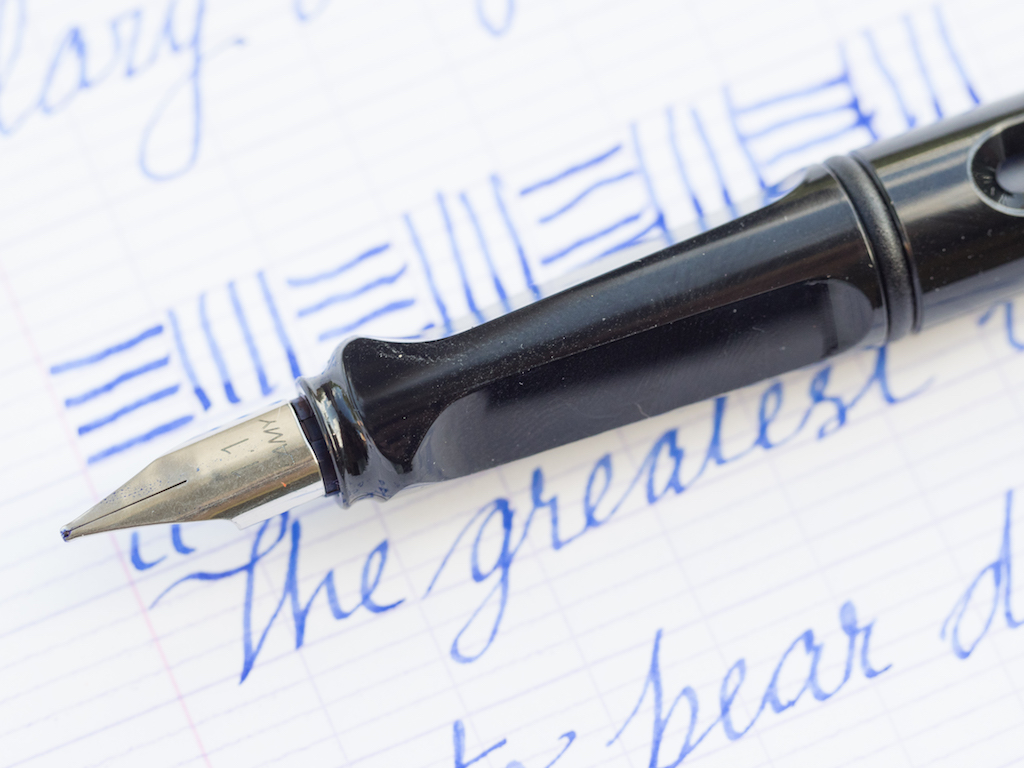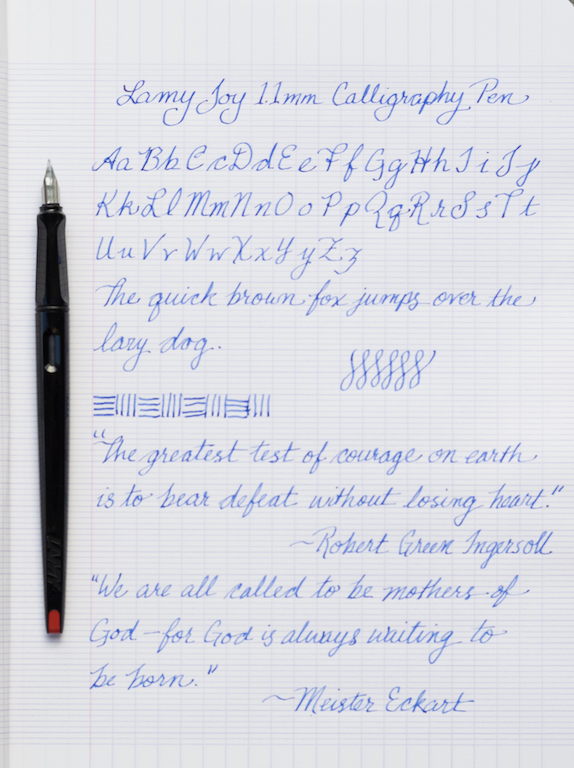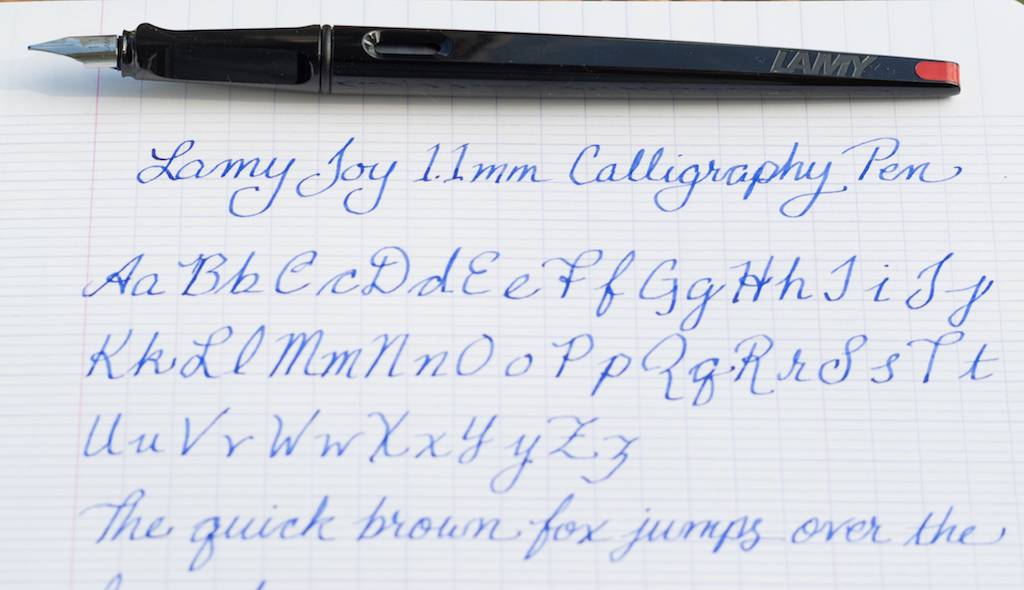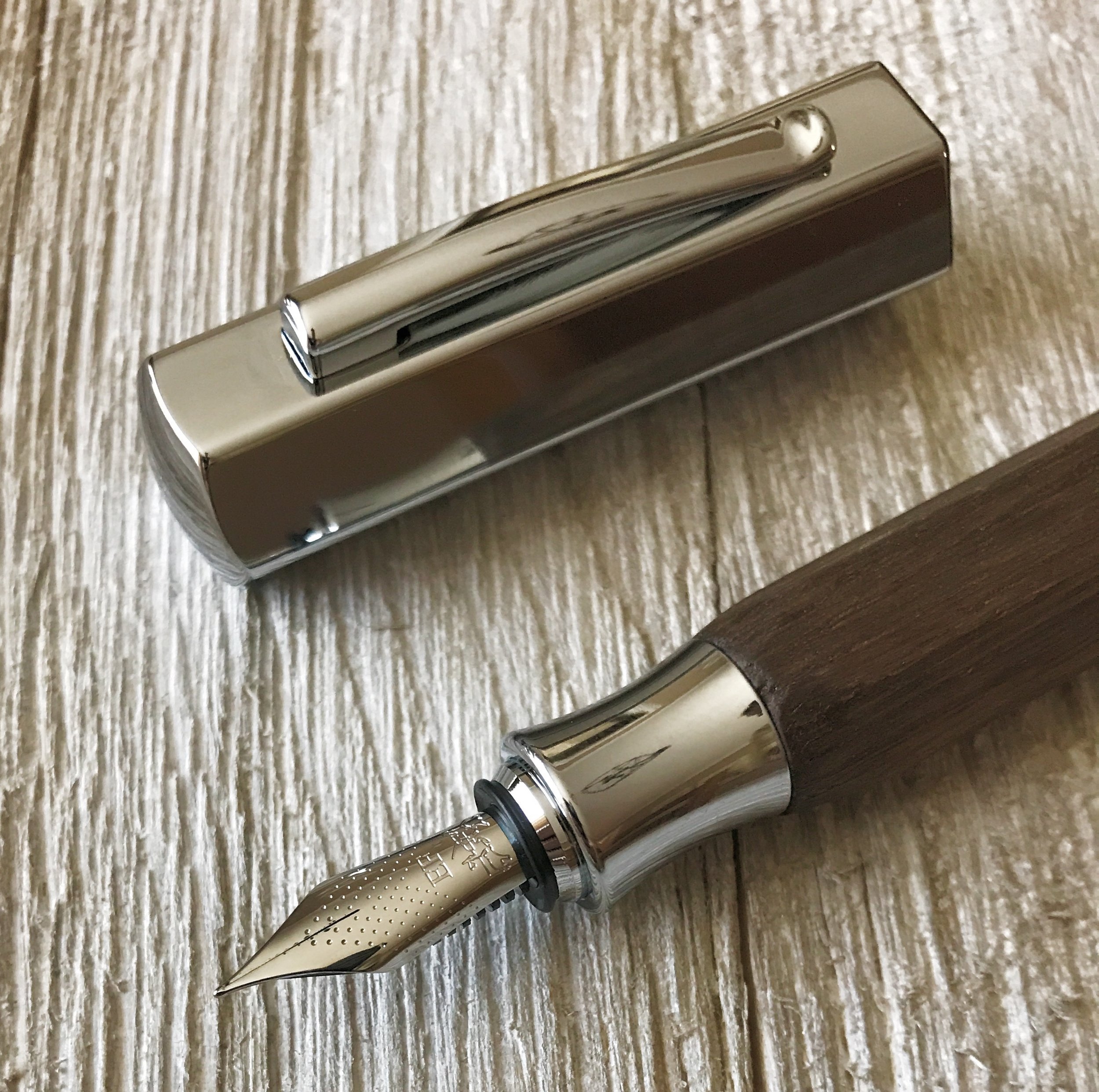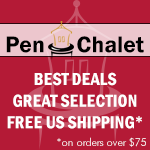(Susan M. Pigott is a fountain pen collector, pen and paperholic, photographer, and professor. You can find more from Susan on her blog Scribalishess.)
The Wancher Crystal Fire Opal fountain pen is a demonstrator pen with a couple of unique features that make this pen stand out from other pens in its price range.
First, the cap uses a “double compact” mechanism to insure that the pen does not dry out between uses. The inner cap is built so that you push and twist to mount it and that creates a seal.
Credit: Wancher.com
Second, this pen can be inked using a cartridge, converter, or an eyedropper (provided with the pen). There’s a rubber ring between the grip and barrel that seals the barrel, so if you choose to eyedropper the pen no silicone grease is necessary. As an eyedropper, this pen holds a whopping 4ml of ink.
The Wancher Crystal comes in five colors: Indigo Sapphire, Smokey Quartz, Emerald, Fire Opal, and Light Smoke Topaz. The pen I received is Fire Opal which is an orange acrylic. This pen reminds me of the Aurora 88 Minerali in terms of its design, though the Wancher is considerably less expensive and doesn’t come with a gold nib.
The pen is an intriguing mix of colored acrylic and clear. The cap finial, the grip, and the barrel bottom are all mosaic-colored acrylic. The cap is black acrylic and the barrel is clear.
The cap is adorned with a chrome clip and its band is engraved with the name Wancher. As stated earlier, the cap boasts a push and twist mechanism that seals the pen so the nib doesn’t dry out. I don’t always get the cap affixed on the first try because the threads don’t catch, but I like the concept.
The nib is a stainless steel fine with some scroll work and the nib size etched on the surface. It writes smoothly and is fairly wet, but I have experienced a few hard starts with this nib.
The pen I received did not come with an eyedropper (because Brad left it out of the package!), so I can’t comment on that accessory. But the converter works well and holds a decent amount of ink.
I consider this pen to be medium sized, measuring 152mm capped, 141mm uncapped, and 172mm posted. Posting this pen throws off the balance, so I don’t recommend writing with it posted. Overall, it’s a light pen, weighing only 23 grams capped.
I’ve been using the Wancher Crystal for journaling, grading, and general writing. It’s a comfortable pen, and I’ve been mostly pleased with how it writes. It performs best on fountain-pen friendly paper, but it handles cheap copy paper fairly well too. As a grading pen, the fine is a little wider than I like since I need to write in tiny spaces, but for general writing the nib is a good size.
This is my first Wancher pen, and I’m really quite impressed. I like the design (though if it were up to me I would’ve gotten the Indigo Sapphire color because: blue). The fact that it can be used as an eyedropper is a definite plus. I also like the twist and seal mechanism in the cap.
You can purchase the Wancher Crystal Fountain Pen from Wancher Pens with a fine or medium nib for $70.00.
Pros
- The Wancher is an interesting pen design with both colorful accents and a clear demonstrator barrel.
- You can use three different filling methods with this pen: cartridge, converter, and eyedropper. The rubber seal means you don’t need to use silicone grease to eyedropper the pen.
- The special cap design means that the nib should not dry out between uses.
- The pen comes with several accessories: an eyedropper, a converter, and a cartridge.
- The stainless steel nib is smooth and mostly trouble free. I experienced a few hard starts in the course of writing (usually on cheaper paper, but I had a few hard starts on fountain-pen-friendly paper as well).
Cons
- The Wancher pen retails for $70.00 which seems a bit expensive considering that this is not a piston filler and the pen is acrylic. But it can be eyedroppered, and in the photos on Wancher’s website, it comes packaged in a really nice, hinged wooden box (though the site says packaging may vary).
- The Wancher is an acrylic pen. People who prefer weightier pens will probably find this pen to be too light.
- Occasionally I experienced hard starts with this pen, usually on cheaper paper.
(Wancher provided this product at no charge to The Pen Addict for review purposes.)
Enjoy reading The Pen Addict? Then consider becoming a member to receive additional weekly content, giveaways, and discounts in The Pen Addict shop. Plus, you support me and the site directly, for which I am very grateful.
Membership starts at just $5/month, with a discounted annual option available. To find out more about membership click here and join us!

















